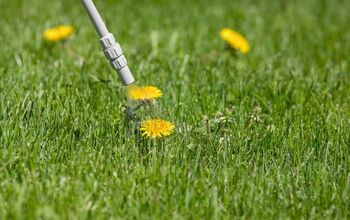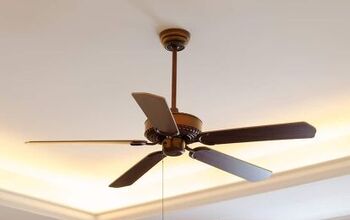Why Are My Leather Shoes Growing Mold?

If you have ever reached into your closet to grab your favorite pair of leather boots only to find them covered in a layer of mold, then your disgust was likely followed by disappointment and confusion. How do leather shoes get moldy? It’s a strange phenomenon, but it can happen to anyone. The key is to learn the climate in which mold grows on shoes, and then remove these conditions from your home.
Leather shoes and other leather goods grow mold when they are exposed to hot and humid conditions for a prolonged period. A lack of air circulation, darkness, and a lack of breathing room can also further exacerbate this problem. To help keep your leather products mold-free, decrease the humidity and temperature in your home, and place leather goods in the open, with plenty of air circulation and light.
If you have been the victim of green or white mold on your leather shoes, handbags, or belts, then you need to address the climate in your closet. Mold is unhealthy, and it’s unsightly when you find it growing on your favorite clothing and accessories. To stop this problem before it gets worse, you must first understand why it’s happening, and then change your environment, so the problem goes away permanently.
Five Reasons Why Your Leather Shoes Are Growing Mold
1. It’s Too Humid
One of the main contributors to all sorts of mold in the home is humidity. When your home has a lot of moisture, it makes it easier for mold to form. This is also true for mold on leather. You must remember that leather is a natural material.
Adding humidity to natural materials creates an ideal breeding ground for mold. If you live in a tropical environment, then humidity is likely playing a major role in the mold forming on your shoes.
2. The Temperature Is Too High
High temperatures in your home also contribute to mold formation on leather shoes and other leather goods. Just as mold loves humidity, it also thrives in warmth. This is why you frequently find mold in warm places but rarely find it in cold and freezing locations.
3. There Isn’t Enough Air Circulation
Another factor that can contribute to mold formation on leather is air circulation — or the lack of it. When you don’t have consistent airflow in a closet or wherever you store your leather shoes, then the air can become stagnant and heavy. This environment makes it easy for mold to form and multiply unchecked.
4. It’s Too Dark
If you store your shoes in a closet, then darkness may be partially to blame for the mold forming on your leather shoes. Unlike many other organisms, mold does not require light to grow. Mold is sometimes killed by light, especially natural light. If your shoes live in darkness, then the growing mold has a better chance to thrive.
5. Your Shoes Don’t Have Room To Breathe
Just as a lack of airflow can cause mold to grow on your leather goods, so can a cramped space. Sometimes leather shoes are tucked away into a cramped space, and this can make your mold issue even worse. If you don’t allow all your shoes plenty of room to breathe, even a decent airflow won’t help.
Seven Ways To Prevent Your Leather Goods From Growing Mold
1. Periodically Treat Your Leather Goods To Retain Quality
If you keep finding a layer of mold on your leather products, then you must make an active effort to take better care of your leather goods. It takes time for mold to form, and even longer for it to thrive and blanket your entire garment or accessory.
Therefore, if you periodically (seasonally) clean and polish all your leather goods, the mold will have less time to flourish. It is also great to clean and maintain your leather. It will help it look great for longer.
2. Use A Dehumidifier
Since humidity is a major contributor to moldy leather, one of the best ways to stop mold before it starts is to remove humidity from the home. There are many ways to remove humidity from the home, but the most effective and reliable way is to use a dehumidifier.
To ensure that your leather goods don’t get moldy, you should place a dehumidifier near your closet and turn it on periodically. This will help ensure that your closet (or wherever you keep your leather shoes and accessories) stays at a lower humidity. The lower the humidity, the less likely it is that mold will form.
3. Store Your Leather Out In The Open
While it is customary to store your shoes in a discrete location, you may want to think about putting your leather goods on display. There are several reasons why you should store your leather where you can see it.
For one, what you can see, you are more likely to clean. As soon as you notice your leather looking dull, you are more likely to polish it. Furthermore, placing your leather in the open allows plenty of air circulation, putting it in the light, rather than constant darkness.
4. Use Ceiling And Oscillating Fans
If you don’t want to have your leather on display, then consider utilizing fans. If you have a ceiling fan, keep it on more often, and with your closet door open. Increasing your air circulation is a great way to prevent mold on your leather shoes, as well as mildew and funky smells in your home.
If you don’t have a ceiling fan, use an oscillating fan. Remember to position it periodically in the direction of your closet, so you can ensure there is good airflow where you need it.
5. Shine Light On Your Shoe Closet
If possible, add some lighting in your shoe closet. Remember that mold thrives in the dark, so the more you can brighten up the area where you store your leather shoes, the less mold there is likely to be.
Open your closet to expose it to natural light. Or you can also consider adding additional lighting in your closet. This will help with the mold and also make it easier to find your belongings when you need them.
6. Clean Your Leather Goods After Use
Another great way to stop mold from growing on your leather shoes is to keep them clean. After you wear them outside, wipe down your leather before putting it away in your dark closet. The less bacteria and organic matter that is left on your boots, the lower the chances of developing moldy leather.
7. Keep Your Home Cool
Lastly, remember that mold likes the heat. Therefore, lowering the temperature in your home is a great way to slow down the development of mold. Naturally, air conditioning is the easiest way to do this. Air conditioning is also effective at lowering the humidity in your home, making it incredibly effective at combating this problem.
Air conditioning, however, is also quite expensive. Therefore, if you are trying to save money on your electric bill, consider storing your leather in a cool dry part of your home. This is an effective and free way to reduce the growth of mold on your leather.
Wrapping Up Why Leather Shoes Grow Mold And How To Stop It
If you have ever found a fuzzy layer of mold growing on one of your favorite pairs of leather shoes, your shock was likely matched only by your disdain. Leather is a natural product, and mold can feed on it, and thrive when given the correct environment.
Since mold loves humidity and heat, do your best to keep your leather in a cool dry place. Also try to shed light on your leather, since mold loves darkness. Lastly, air circulation is crucial, so ensure a good airflow exists wherever you store your leather.
Related Guides:
- At What Temperature Does Mold Die? (Find Out How To Kill Mold!)
- Is Moldy Soil Bad? How To Fix It
- Will Alcohol Kill Mold? (Find Out Now!)

Tom Gaffey is an expert writer who currently resides in Washington D.C. Tom has a passion for real estate and home improvement writing, as well as travel and lifestyle writing. He lived the last twelve years in Hawaii where he worked closely with luxury resorts and event planners, mastering his knowledge of aesthetics and luxury products. This is where he found his passion for home improvement and a keen interest in DIY projects. Currently, Tom resides in Washington D.C, and also working on his debut fiction novel.
More by Tom Gaffey











![The 10 Best Table Saws - [2022 Reviews & Buyer's Guide]](https://cdn-fastly.upgradedhome.com/media/2023/07/31/9070645/the-10-best-table-saws-2022-reviews-buyer-s-guide.jpg?size=350x220)















